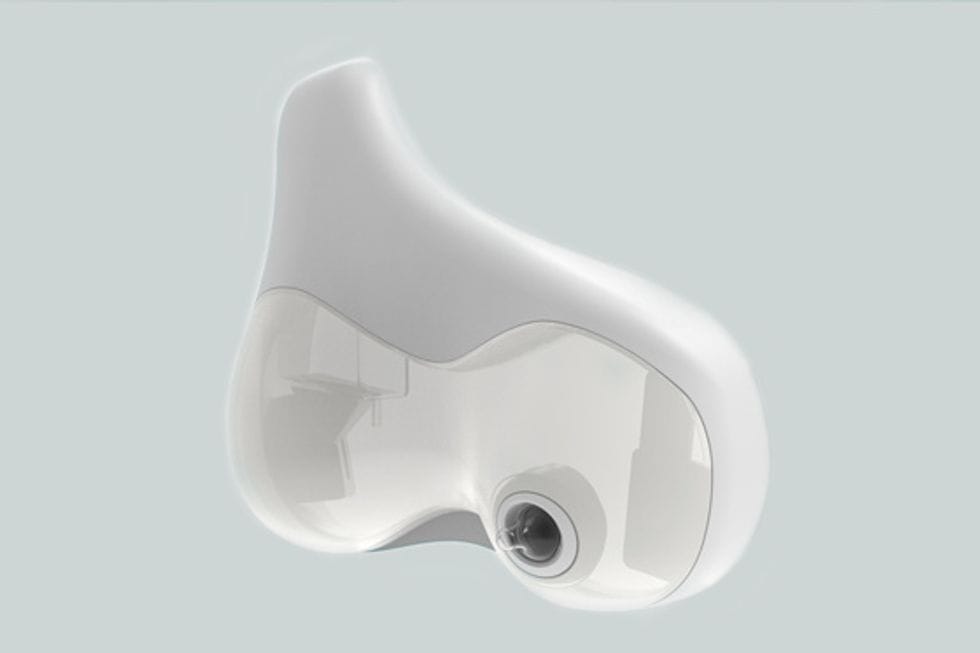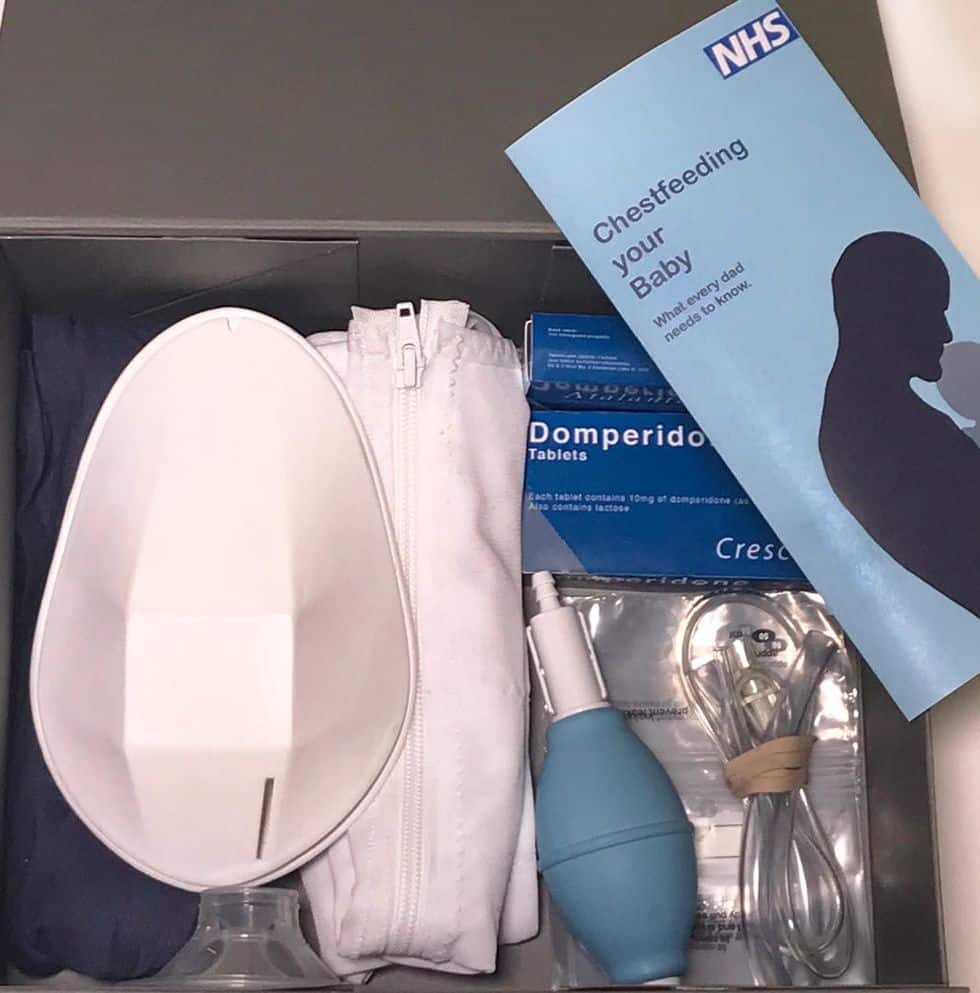These male breastfeeding devices are paving the way for breastfeeding dads

Father's Nursing Assitant
This could be a game-changer.
We independently select and share the products we love—and may receive a commission if you choose to buy.
Table of Contents
Even when partners want to divide parenting duties equally, breastfeeding can make it tricky. It’s simply not possible for fathers to take on nursing duty—but what if we normalized chestfeeding and breastfeeding dads?
At the 2019 SXSW festival in Austin, Texas, Dentsu, a tech firm from Japan, showcased a breastfeeding system known as the Father’s Nursing Assistant.
The wearable device lets dads feed babies as mom would, and promotes skin-to-skin contact between fathers and infants. One of the fake “breasts” holds the milk or formula and the other contains the nipple system, so the baby can only nurse on one side. The device doesn’t just feed the baby, it also tracks data about the baby’s nursing sessions and transmits the info to the dad’s smartphone.

Related: What is chestfeeding? (And why it’s so important)
New innovation in breastfeeding devices
According to Dentsu, the device was created with “advice from pediatricians and babysitters, who say that babies tend to touch the breast with their hands when feeding and that the softness seems to soothe them, the product has been shaped to resemble a woman’s breasts.”
It’s not for sale yet, but it will be interesting to see if the device’s appearance at SXSW prompts more innovation in skin-to-skin systems for dads, and breastfeeding dads.
Meanwhile, a design student in the UK, Marie-Claire Springham, has invented a “chestfeeding” kit that could help fathers induce lactation and nurse their babies. The invention won the Grand Trophy prize at the Meaning Centred Design Awards 2018, and Springham hopes to make it available to consumers within five years.
The kit contains a pump and a compression vest, and it also contains hormones. Fathers-to-be would start taking progestin as soon as they learned they’re going to be a dad, and six weeks before the due date they’d start taking domperidone, which would trigger hormones to start milk production.
When baby arrives, mom and dad could take turns nursing and pumping.

During a television appearance on Good Morning Britain, Springham explained that she designed the kit as an empathy tool. “I was looking at post-natal depression and I learnt so much, particularly that it occurs in men and the main cause of that is the feeling of being left out,” she explained.
“I read a lot of heartfelt accounts, the dad comes home all ready to be Super Dad and the baby’s not interested because the baby’s attracted to the smell of breast milk and that’s what mum smells like,” she continued.
Springham has received plenty of backlash regarding her invention, with media personalities including Piers Morgan (who is also pretty famously against dads wearing Baby Bjorns) ridiculing it.
Related: Watch this mom use ‘chicken cutlets’ to get her baby to take a bottle
But Julie Jenson Bennett, the CEO of Precipice Design and jury chair of the Meaning Centred Design Awards was impressed by Springham’s kit, and sees potential. “It challenges the fundamental meanings of male and female, father and mother, parent and child. At a time when we increasingly use hormones, medication and technology to change the life options available to us, Marie-Claire’s design concept goes right to heart of our taboos,” says Bennett.
Related: Gender equity at home is still out of reach, our survey shows
Other ways dads can help with breastfeeding
The idea of fathers taking hormones to stimulate milk production may be new, but the benefits of breastfeeding dads feeding and connecting with their babies through skin-to-skin contact isn’t.
Dads have been hacking their own chestfeeding kits using bottles (without the hormones) for a long time, and some dads have even been able to “nurse” their babies using supplemental feeding systems (basically a tube and suction cup attached to the nipple). Now, bottles that look like a breast, such as the ones from Emulait, can also help bridge the gap.
Springham estimates it will take about five years before her kit could be in the hands of consumers, but it could be a game-changer for families struggling with infant feeding.
It’s not going to appeal to all dads, but it would be nice for some men to have the choice if they wanted to try it.
In the meantime, fathers can help out their breastfeeding partners by supporting them in their breastfeeding journey. Simply sitting with the breastfeeding parent, getting them a glass of water, or doing chores such as laundry that the nursing parent can’t do because they’re breastfeeding are all forms of support.
Researchers note that “paternal emotional, practical and physical supports [have been] identified as important factors to promote successful breastfeeding and to enrich the experience for the mother and subsequently the father.”
Midwife CJ Blennerhassett previously told Motherly that while couples often imagine sharing the baby duties equally, in reality the nursing parent will be doing the majority of work involved in the feeding. “Partners and members can find other ways to support that workload,” Blennerhasset says. “That’s OK.”
A version of this post was originally published February 27, 2019. It has been updated by Motherly editors.



































